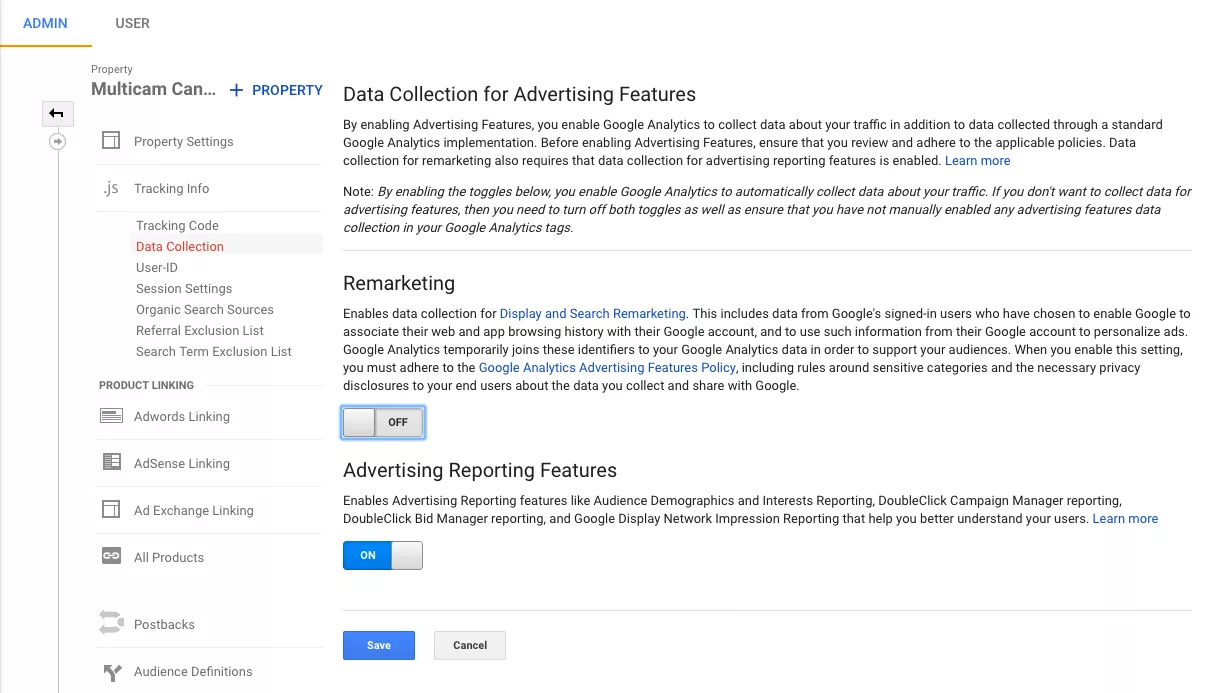Efficient Approaches for Remarketing in Google Analytics
In the realm of electronic advertising, the realm of remarketing in Google Analytics stands as a crucial tool for businesses aiming to boost their on the internet presence and conversion rates. Via strategic target market segmentation, tailored remarketing lists, and interesting advertisement creatives, organizations can craft tailored projects that resonate with their target audience. The true success exists in the capability to constantly refine and enhance these methods based on performance metrics and data understandings. By checking out the nuances of dynamic remarketing and leveraging sophisticated monitoring tools, businesses can open the full potential of their remarketing initiatives, resulting in raised brand visibility and consumer interaction.
Target Market Segmentation
Utilizing audience division is an essential method in optimizing the effectiveness of remarketing projects within Google Analytics. By dividing your audience into unique groups based on their habits, demographics, or passions, you can tailor your advertising and marketing messages to be more appropriate and engaging. This strategy allows you to provide customized advertisements to details segments, boosting the possibility of conversion.

Additionally, target market division aids you comprehend the varying demands and choices of various consumer groups, allowing you to craft even more engaging ad creatives and deals. This targeted strategy not just enhances the effectiveness of your remarketing efforts but additionally boosts overall project efficiency.
Establishing Remarketing Listings
To successfully implement remarketing strategies in Google Analytics, the preliminary action includes creating targeted remarketing checklists based on particular audience interactions. Establishing up remarketing listings allows marketing professionals to section their website site visitors right into various classifications based on their behavior, such as web pages viewed, items looked for, or actions handled the website. By defining these sectors, marketing professionals can then create personalized and relevant ads that target these certain teams, increasing the chance of conversion.
Remarketing checklists can be established utilizing numerous requirements such as page check outs, duration of see, particular objective completions, or also specific events activated on the website. This degree of personalization makes it possible for marketing experts to customize their promotions to match the passions and preferences of each fractional audience, bring about higher engagement and conversion rates.
Additionally, remarketing checklists can also be produced based upon information imported from other resources like CRM systems, enabling a lot more specific targeting. By setting up these targeted remarketing lists, marketing professionals can effectively connect to prospective clients that have actually already shown rate of interest in their product and services, making best use of the influence of their remarketing projects.
Creating Compelling Advertisement Creatives
After segmenting site site visitors right into targeted remarketing checklists based upon details audience interactions, the next important action is to craft compelling advertisement creatives that reverberate with each segmented team's choices and interests. The performance of remarketing campaigns greatly depends on the ability of these ad creatives to record the attention of the target market and drive them to take the wanted activity.
To create compelling ad creatives, it is important to understand the unique features of each segmented team (What Is “Remarketing” In Google Analytics?). Tailoring the messaging, visuals, and supplies to straighten with the interests and choices of the audience can substantially boost the possibilities of conversion. Using dynamic ads that instantly change material based on the customer's behavior can additionally boost the personalization of the ad experience

Tracking Efficiency and Optimization
Efficient monitoring of project efficiency and regular optimization are vital elements of successful remarketing techniques in Google Analytics. To make sure the performance of remarketing projects, online marketers must regularly track vital performance metrics such as click-through prices, conversion rates, and return on advertisement spend. By monitoring these metrics, marketing professionals can acquire beneficial understandings right into the efficiency of their campaigns and determine areas for renovation.
In Google Analytics, online marketers can utilize tools like conversion tracking and audience segmentation to examine the efficiency of their remarketing campaigns. Conversion tracking allows marketers to track certain activities that users take after clicking on a remarketing advertisement, providing useful information on the performance of the campaign in driving desired end results. Audience division, on the various other hand, makes it possible for online marketers to split their target market into various sectors based on different requirements such as demographics, habits, and passions, enabling even more targeted and personalized remarketing efforts.
Constant optimization is important for making best use of the influence of remarketing projects. Marketers ought to use A/B screening to trying out different ad creatives, messaging, and targeting methods to recognize one of the most efficient browse around here techniques. By frequently analyzing project efficiency information and making data-driven optimizations, marketing professionals can make certain that their remarketing projects are accomplishing the preferred results and driving conversions successfully.
Leveraging Dynamic Remarketing
Utilizing dynamic remarketing can significantly enhance the importance and impact of targeted advertisements in Google Analytics. This sophisticated method allows advertisers to reveal tailored advertisements to individuals that have previously seen their website or utilized their mobile app. By dynamically presenting items or services that the individuals have actually revealed interest in, vibrant remarketing assists to maintain the brand fresh in their minds and urges them to go back to finish an acquisition.

Moreover, vibrant remarketing projects can be automated and maximized in real-time based on performance data, guaranteeing that the advertisements continue to be relevant and efficient. By leveraging dynamic remarketing in Google Analytics, marketers can produce more impactful and targeted ad campaign that reverberate with their target market and drive results.
Final Thought
To conclude, effective remarketing techniques in Google Analytics entail target market segmentation, targeted remarketing lists, compelling ad creatives, performance surveillance, and dynamic remarketing. By concentrating on customized ads, information analysis, and continual optimization, services can boost conversion prices and drive involvement efficiently. Leveraging devices like conversion tracking guarantees that advertisements continue to be pertinent and customized, bring about overall success in remarketing efforts.
With critical audience division, customized remarketing listings, and interesting ad creatives, organizations can craft tailored campaigns More Bonuses that resonate with their target audience. Utilizing dynamic ads that instantly readjust material based on the customer's behavior can also boost the customization of the ad experience.
Conversion monitoring permits marketing professionals to track certain activities that customers take after clicking on a remarketing advertisement, giving beneficial information on the efficiency of the campaign visite site in driving desired end results.Making use of dynamic remarketing can significantly boost the importance and effect of targeted ads in Google Analytics - What Is “Remarketing” In Google Analytics?.In final thought, efficient remarketing strategies in Google Analytics entail audience division, targeted remarketing checklists, compelling advertisement creatives, performance monitoring, and vibrant remarketing